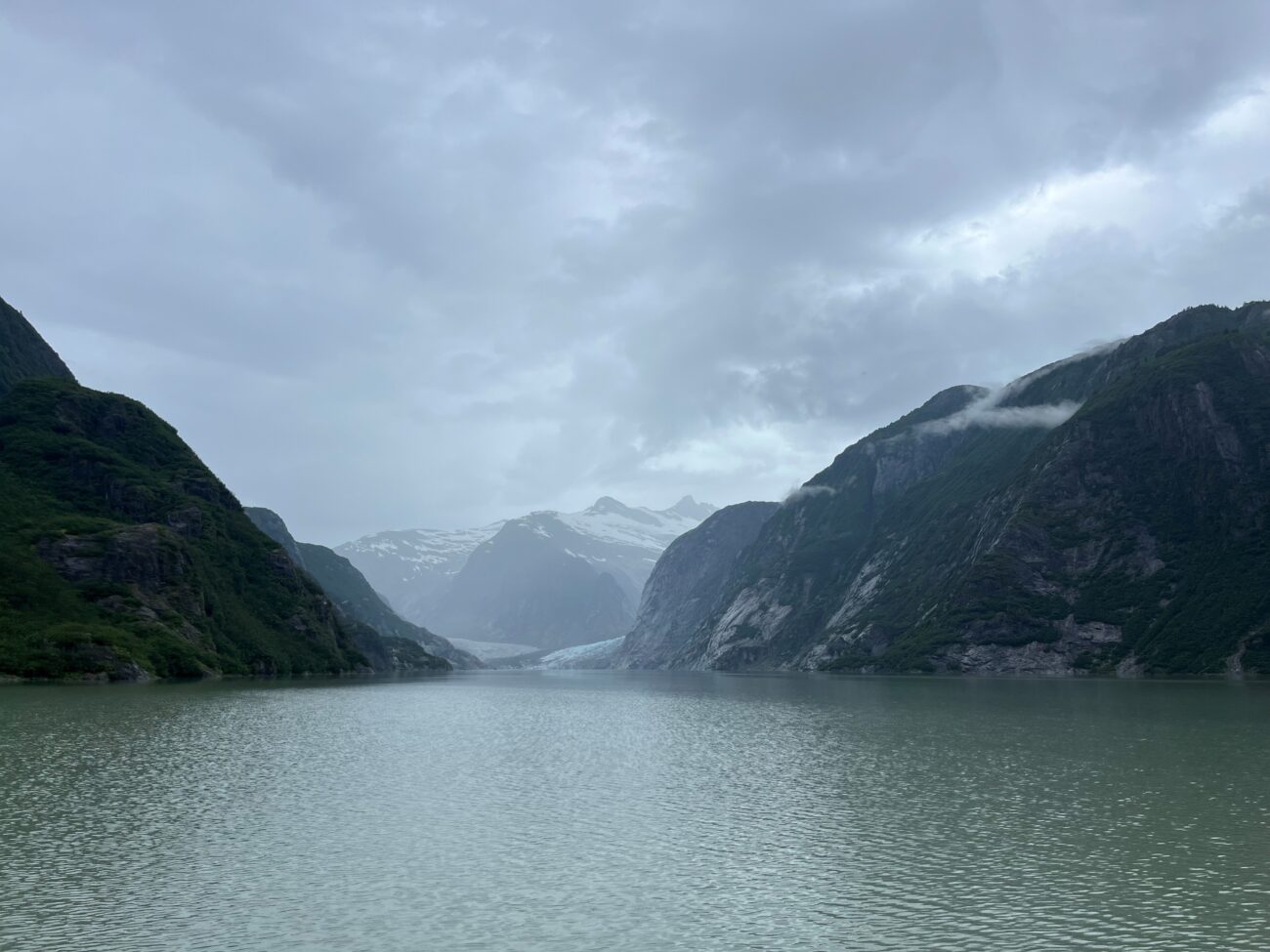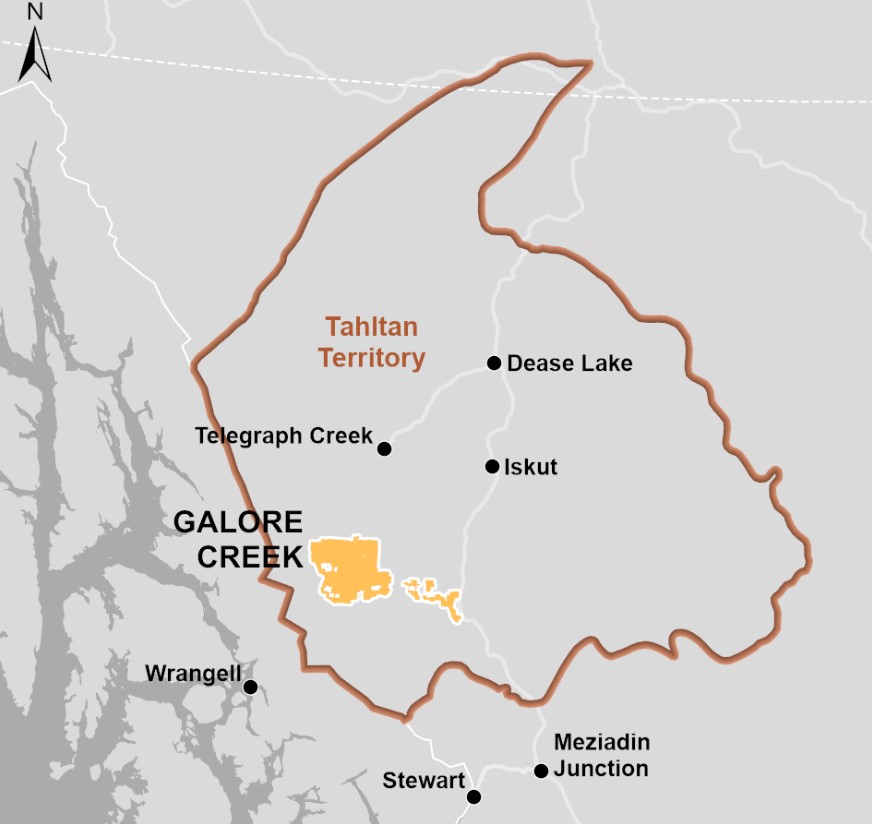
The Canadian government said last month it will spend approximately $15 million on a 27-mile road in support of critical minerals at Galore Creek Mine. The road will stretch between two different work camps on the Galore Creek Mine’s property and will bring the copper, silver and gold mine closer to operation.
This news is hard to hear across the border, since the site is very close to the Stikine River headwaters in Southeast Alaska. Some Wrangellites are very concerned about this development near a waterway they depend on.
Tlingit and Tahltan tribal member Christie Dascawah Jamieson was born and raised in Wrangell, located at the mouth of the Stikine River. She said she and her husband fish and hunt as much as they can.
“If this copper and gold mining project comes into play, it’s going to be a huge threat to our way of living,” she said. “Not only to Wrangell, but Petersburg [too], we both share the Stikine River.”
She said she has fond childhood memories going up and down the Stikine.
“It was one of the best times of my life,” Jamieson said. “I just cannot imagine the river being totally devastated by this copper and gold mining project.”
Jamieson worries the mine will destroy the river
Jamieson said she worries that the mine will destroy the river and surrounding land and that the mine’s owner, Galore Creek Mining Corporation, won’t clean up after extraction.
“[If] they don’t clean up what they have ruined and they leave it for somebody else, it’s just left behind,” she said. “The land and the beauty and the wildlife and the fish are all gone; and it’s so, so sad, because that’s our way of life.”
Galore Creek Mine has been in the planning stages for almost 20 years.
Galore Creek Mine went through many changes over the last 20 years
It’s changed investors, been put on hold due to capital costs skyrocketing and has been waiting on negotiations between British Columbia and the Tahltan Nation – the tribe who owns nearby land on the B.C. side of the border.
KSTK contacted Galore Creek Mine by phone and email. They responded the day of publication and we anticipate to interview in the near future.
Alanah Connie with the B.C.’s Ministry of Energy, Mines and Low Carbon Innovation said the road funding is coming from the federal government and to call the country’s natural resources department.
Marie Martin, senior communications advisor with Natural Resources Canada, also responded the day of publication and said they’re looking into KSTK’s request.
“We consider that border to be a colonial border.”
Southeast Alaska Indigenous Transboundary Commission (SEITC) is a coalition of 15 tribes on the Alaska side of the border advocating for having a voice in the mining.

President Esther Aaltséen Reese said Wrangell will be directly impacted by the mining project. Galore Creek is 25 miles from the border and the entire project drains into the Stikine River.
“We consider that border to be a colonial border,” she said. “It did not exist in the time of our ancestors and we were allowed to care for our lands on both sides of the border. Now, because of that border, the tribes downstream are restricted and we aren’t given rights to have a say in what happens to projects that will directly impact us.”
She said the Stikine is literally the lifeblood for Wrangell, in terms of subsistence foods and recreation.
“…we’re protecting our salmon.”
Reese said for them not to have a voice in the decision-making is equivalent to a human rights violation. The tribal organization is asking the Inter-American Commission on Human Rights to pause another mining project up the Unuk River near Ketchikan for similar reasons. Reese said they – the Tlingit, Haida and Tsimshian – are salmon people and she doesn’t want her culture only to know salmon as a myth.
“There was a young woman at one of the conferences that said in their streams that had been polluted, salmon now only exists in their myths,” Reese said. “That is what we’re fighting against. We want to make sure that we’re protecting our salmon.”
The coalition’s Executive Director Guy Archibald said it’s important to protect salmon because it not only feeds the culture and people, but also the forest. He said that nature is good at balancing itself after an occasional catastrophic impact. But the Galore Creek mine would put consistent stress on the environment.
“Salmon and ecosystems cannot tolerate constant, low-level stress,” he said. “I mean, we know what that does to our immune system, digestive, nervous system. But that’s what’s happening here and we’re losing our salmon. We’re watching an extinction event.”
He said that the British Columbia government is aware of the detrimental outcome the mine would produce.
“The B.C. government has basically declared these upper head waters as a sacrifice zone,” Archibald said. “They know they’re going to be environmentally damaging. They’re willing to take that damage in order to pump up their economy.”
(Alanah Connie, communications manager for B.C.’s Ministry of Energy, Mines and Low Carbon Innovation, said the B.C. government does not use the term “sacrifice zone.”)
One major concern is the mine waste
Archibald said the amount of gold, copper and silver that the mine will produce is minimal compared to the waste that will threaten the area.
“The mine talks about it being a copper mine, gold mine, silver mine, critical minerals,” he said. “All the mines are critical minerals. Now it’s just a talking point, but you know, looking at when we talk about a low grade mine, their copper concentration is 0.72% per ton of copper.”
That means the company will get nine pounds of copper when they mine one ton of rock. The amount of gold and silver would be even less. He said this minimal amount doesn’t make it a copper or gold mine, but a hazardous waste mine.
The company has been actively building roads over the last three years
Though Canada is funding the new 27-mile road, Archibald said other roads already exist to access the mine property. He said the company has been actively building the road and bridges over the last three years.
He said that a major concern is the mine waste or tailings that the mine will produce.
“The mines are going to build the tailings’ dams or the tailings’ pile or the water treatment is going to have to exist in perpetuity, forever, and given a forever amount of time, every thing will happen: the world’s largest flood, the world’s largest earthquake,” Archibald said. “It’s all going to happen and Wrangell is directly downstream from this.”
But there could be some hope for sharing these concerns. He said the mine’s plans are changing because the owners (50/50 partnership between Tech and Newmont) want to move the tailings management facility to another location.
“it will open the environmental assessment back up for public scrutiny…”
Archibald said this change would allow tribal members, Wrangellites and other communities to voice their opinions.
“The good news is it’s considered a major amendment to their mine plan,” he said. “So it will open the environmental assessment back up for public scrutiny and that should give an opportunity for Wrangell and the Southeast tribes to make their voices heard.”
He said the tribal coalition speaks with the British Columbia Environmental Assessment office on a bi-monthly basis and they have been expecting the amendment any day.
As of right now, there’s no definite timeline for when the mine will open.
KSTK attempted to contact the Tahltan Nation but they haven’t responded.











